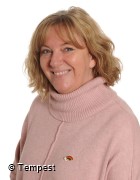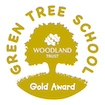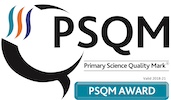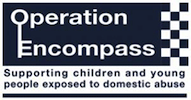Mrs Grierson is responsible for the English curriculum in our school.
Phonics
The Cathedral Letters and Sounds is a phonics resource based on a document produced by the Department for Education in 2007. It aims to build children's speaking and listening skills in their own right as well as to prepare children for learning to read by developing their phonic knowledge and skills. It sets out a detailed and systematic programme for teaching phonic skills for children starting by the age of five, with the aim of them becoming fluent readers by age seven.
There are six overlapping phases. The table below is a summary based on The Cathedral Letters and Sounds guidance for Practitioners and Teachers.
|
Phase |
Phonic Knowledge and Skills |
|
Phase One (Nursery/Reception) |
Activities are divided into seven aspects, including environmental sounds, instrumental sounds, body sounds, rhythm and rhyme, alliteration, voice sounds and finally oral blending and segmenting. |
|
Phase Two (Reception) up to 6 weeks |
Learning 19 letters of the alphabet and one sound for each. Blending sounds together to make words. Segmenting words into their separate sounds. Beginning to read simple captions. |
|
Phase Three (Reception) up to 12 weeks |
The remaining 7 letters of the alphabet, one sound for each. Graphemes such as ch, oo, th representing the remaining phonemes not covered by single letters. Reading captions, sentences and questions. On completion of this phase, children will have learnt the "simple code", i.e. one grapheme for each phoneme in the English language. |
|
Phase Four (Reception) 4 to 6 weeks |
No new grapheme-phoneme correspondences are taught in this phase. Children learn to blend and segment longer words with adjacent consonants, e.g. swim, clap, jump. |
|
Phase Five (Throughout Year 1) |
Now we move on to the "complex code". Children learn more graphemes for the phonemes which they already know, plus different ways of pronouncing the graphemes they already know. |
|
Phase Six (Throughout Year 2 and beyond) |
Working on spelling, including prefixes and suffixes, doubling and dropping letters etc. |
For pronunciation, watch this 'Sounds of the English Phonic Code'
Reading
Once the children begin to learn the phonic code in the third week of Reception, they will be taught to blend the sounds into words. Our early reading books are phonically decodable up to phase 5 of the phonics. In Reception and Y1 children will bring 2 different books home each week as well as working on a third book in class. They will bring a practice book home and these books will only contain phonemes that they have previously been taught in class. Their second book will be their library book which is to share with their families and will be read to them (see below)
We use 'Big Cat :Letters and sounds' books for our guided reading books and Songbirds and Rigby Star books for our practice books. All are phonetically decodable.
Once in Y2 or when they have moved onto phase 6 of Letters and Sounds, the children then move onto other reading schemes such as Oxford Reading Tree and Project X. The children then take home practice books and library books. The children progress through coloured book band levels which cover early stories and poems to more challenging stories and texts. This reading commitment ladder explains our expectations of reading at home and shows the importance we place on this most essential and important skill.
 Reading for pleasure
Reading for pleasure
In addition to guided reading and individual home reading, all children from Reception onwards become members of our school library. They are given a barcode each to identify themselves on the library system and will have a minimum of two sessions per week in one of our school libraries. During this time they can browse books and choose one to take home and read for pleasure with their families. This book might be one that they want to read for themselves or have an adult read to them and may vary in difficulty. The whole point in that they read for pleasure whether alone or with a sibling or adult. This book can be changed whenever they have library time.
Many thanks to all the parents that attended our three reading workshops today. Over 60 parents attended in all to hear about how to instil excellent reading habits into our children. Please look again at the powerpoint presentation below.
Writing
Writing starts in Reception with mark making which as they learn their phonics develops into recognisable phonetically decodable words and common exception words. Once the children are in Year 2 they are expected to know and be using all the common exception words and are taught more formal spelling rules. Spelling continues to develop throughout Key Stage Two through our Purple Mash spelling scheme. Children’s w riting covers all genres from poetry and stories to non-fiction, news reports, letters etc. We use Lancashire cross curricular plans as the basis of all the work we do in English.
riting covers all genres from poetry and stories to non-fiction, news reports, letters etc. We use Lancashire cross curricular plans as the basis of all the work we do in English.
Handwriting
Handwriting is taught regularly through short, focused sessions and is linked with spelling, grammar or phonics objectives. We use the Nelson handwriting scheme and through this the children
- achieve a neat, legible style with correctly formed letters
- develop flow and speed, so that eventually they are able to produce the letters automatically and in their independent learning.






.jpg)
.png)
.png)
